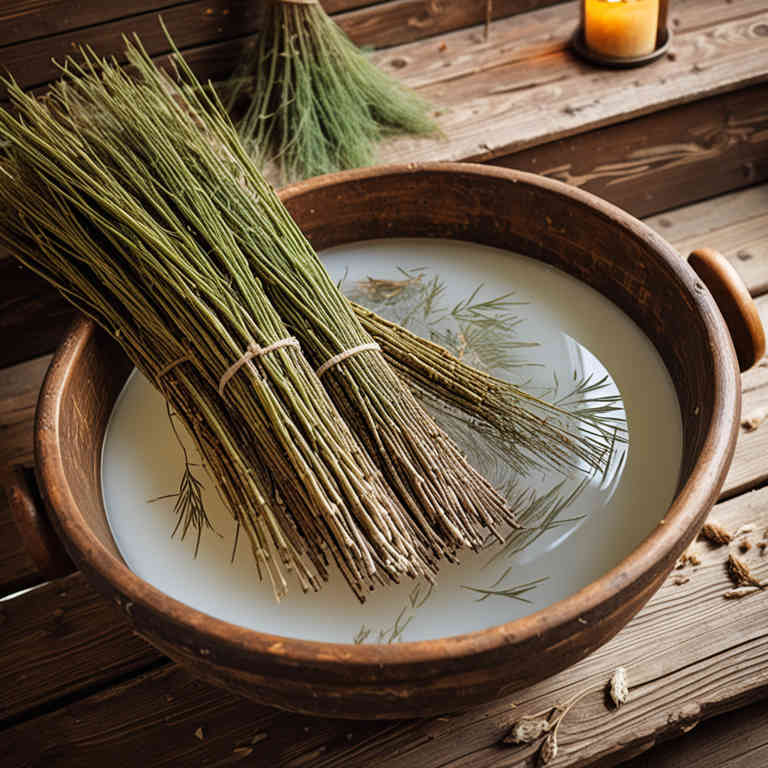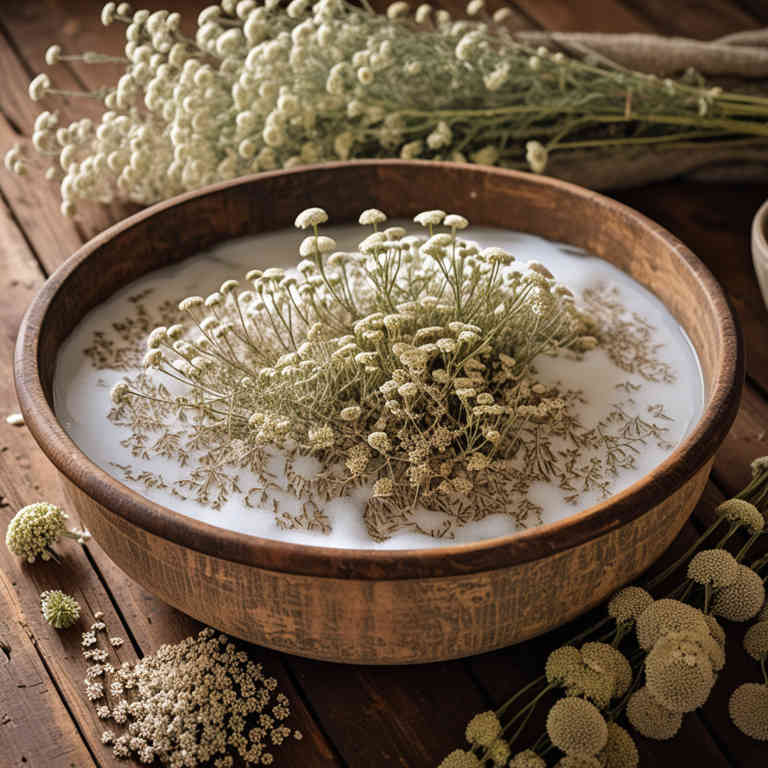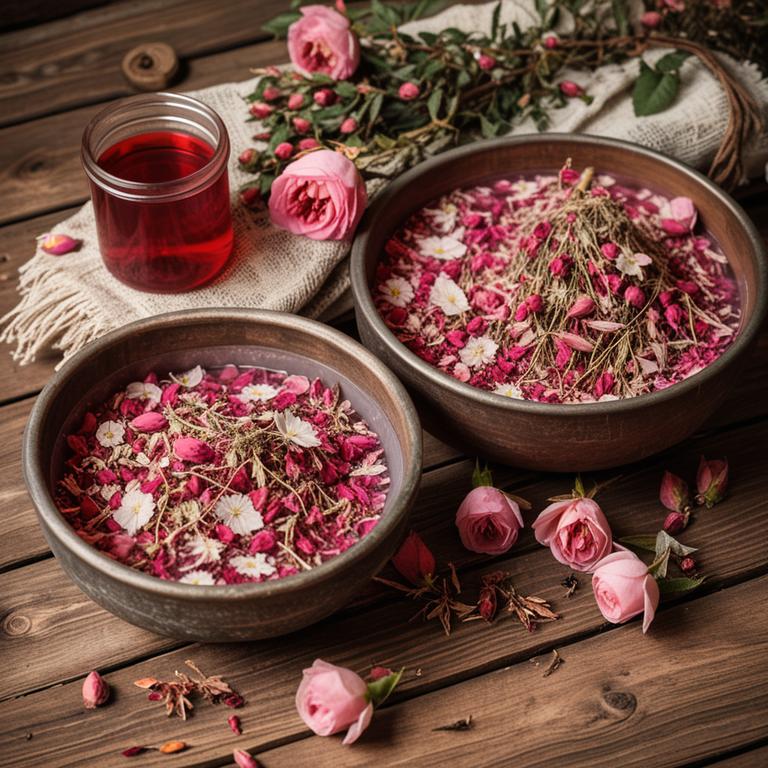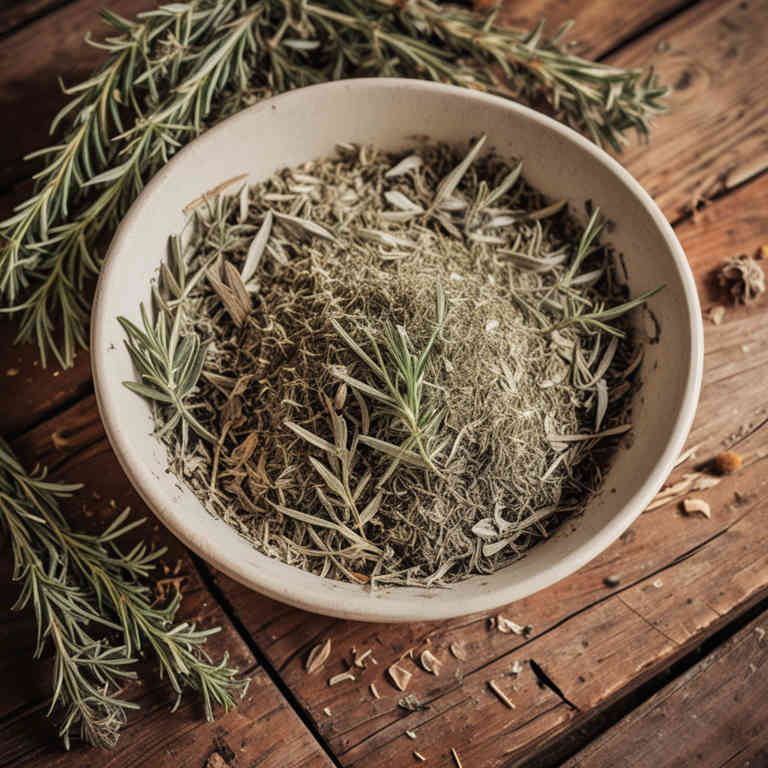10 Best Herbal Baths For Vaginitis

Herbal baths can be a natural and soothing remedy for managing symptoms of vaginitis, offering gentle relief without the use of harsh chemicals.
Certain herbs, such as chamomile, calendula, and lavender, are known for their anti-inflammatory and antimicrobial properties, which may help reduce irritation and infection. To prepare an herbal bath, these dried herbs can be steeped in hot water and then used to soak the affected area or add to a warm bath, ensuring the water is not too hot to avoid further irritation. It is important to consult a healthcare provider before using herbal remedies, especially if symptoms persist or worsen, to rule out more serious conditions.
While herbal baths may provide comfort, they should not replace medical treatment for bacterial or fungal infections that require specific pharmaceutical interventions.
FREE Herb Drying Checklist
How to make sure every batch retains maximum flavor, color, and aroma without the risk of mold or over-drying. Eliminate guesswork and trial-and-error, making herb drying faster, easier, and more efficient every time.
Table of Contents
1. Calendula officinalis

Calendula officinalis, commonly known as garden marigold, is a herbal remedy often used in soothing baths for vaginal inflammation associated with vaginitis.
The anti-inflammatory and antimicrobial properties of calendula can help reduce redness, itching, and irritation caused by infections or irritants. To prepare a calendula bath, a few tablespoons of dried calendula flowers are steeped in hot water, then strained and used to soak the affected area. This gentle, natural approach can provide relief without the harsh side effects of some pharmaceutical treatments.
However, it is important to consult a healthcare provider before using calendula baths, especially if symptoms persist or worsen, to rule out more serious conditions.
2. Hypericum perforatum

Hypericum perforatum, commonly known as St. John's Wort, has been traditionally used in herbal baths for its potential anti-inflammatory and antimicrobial properties, which may help alleviate symptoms of vaginitis.
When infused into warm bath water, the active compounds in St. John's Wort, such as hypericin and hyperforin, may have soothing effects on the vaginal area, reducing irritation and discomfort. These baths are often recommended as a gentle, natural alternative to conventional treatments, though they should not replace medical advice or prescribed therapies. It is important to use properly prepared herbal infusions to avoid skin irritation or allergic reactions.
While some studies suggest possible benefits, more research is needed to fully understand its efficacy and safety for treating vaginitis.
3. Urtica dioica

Urtica dioica, commonly known as stinging nettle, has been traditionally used in herbal baths for its anti-inflammatory and antimicrobial properties, which may help alleviate symptoms of vaginitis.
When prepared as a bath, the leaves of stinging nettle are boiled and then cooled to a comfortable temperature before being used to soak the affected area, allowing the beneficial compounds to be absorbed through the skin. This natural remedy is believed to reduce irritation, itching, and redness associated with vaginal inflammation by soothing the mucous membranes. However, it is important to note that while some individuals find relief with nettle baths, they should not replace medical treatment for bacterial or fungal infections.
Always consult a healthcare provider before using herbal remedies, especially during pregnancy or if symptoms persist.
4. Equisetum arvense

Equisetum arvense, commonly known as field horsetail, has been traditionally used in herbal baths for its potential therapeutic properties, particularly in addressing symptoms of vaginitis.
The plant is rich in silica, which may help strengthen tissues and promote healing, making it a popular choice in alternative medicine. Herbal baths with equisetum arvense are believed to have antimicrobial and anti-inflammatory effects that can soothe irritation and reduce infection risk in the genital area. However, it is important to consult a healthcare professional before using such treatments, as they may not be suitable for everyone and could interact with other medications.
While some individuals report relief from symptoms, scientific evidence supporting its efficacy for vaginitis remains limited.
5. Lavandula angustifolia

Lavandula angustifolia, commonly known as English lavender, has been traditionally used for its soothing and antiseptic properties, making it a popular choice for herbal baths aimed at relieving symptoms of vaginitis.
When infused into warm water, lavender essential oil or dried lavender can help reduce inflammation, itching, and discomfort associated with vaginal infections. The calming aroma of lavender also promotes relaxation, which can aid in overall comfort during treatment. However, it is important to dilute the essential oil properly to avoid skin irritation, as undiluted lavender oil may cause adverse reactions.
While herbal baths can provide symptomatic relief, they should not replace professional medical advice, especially if the infection is recurrent or severe.
6. Chamomilla recutita

Chamomilla recutita, commonly known as German chamomile, has been traditionally used in herbal baths for its soothing and anti-inflammatory properties.
When infused into warm water, chamomile baths can help alleviate symptoms of vaginitis by reducing irritation and inflammation in the vaginal area. The essential oils in chamomile possess antimicrobial qualities that may help combat infections contributing to vaginitis. However, it is important to note that while these baths may offer symptomatic relief, they should not replace medical treatment for underlying infections.
Individuals should consult a healthcare provider before using chamomile baths, especially if they have sensitive skin or known allergies to related plants.
7. Salvia officinalis

Salvia officinalis, commonly known as sage, has been traditionally used in herbal baths to support vaginal health and alleviate symptoms of vaginitis.
The anti-inflammatory and antimicrobial properties of sage may help reduce irritation, infection, and discomfort associated with vaginal inflammation. To prepare a sage bath, dried sage leaves can be steeped in hot water to create a soothing infusion, which is then used to bathe the affected area. Regular use of sage-infused baths may promote healing and restore balance to the vaginal ecosystem.
However, it is important to consult a healthcare provider before using herbal remedies, especially if symptoms persist or worsen.
8. Achillea millefolium

Achillea millefolium, commonly known as yarrow, has been traditionally used in herbal baths for its anti-inflammatory and astringent properties, which may help alleviate symptoms of vaginitis.
When infused into warm water, yarrow can soothe irritation and reduce swelling in the vaginal area, promoting healing and comfort. Its natural antimicrobial qualities may also help combat infections that contribute to vaginitis. However, it is important to consult a healthcare provider before using herbal baths, especially for those with sensitive skin or existing medical conditions.
While yarrow baths can be a complementary therapy, they should not replace professional medical treatment for vaginal infections.
9. Rosa canina

Rosa canina, also known as dog rose, is a herbal remedy that has been traditionally used for its soothing and anti-inflammatory properties.
Rosa canina herbal baths involve soaking in warm water infused with rosehip oil or rosehip extracts, which can help alleviate symptoms of vaginitis by reducing irritation and inflammation in the genital area. The high concentration of antioxidants and essential fatty acids in rosehip oil may support skin healing and improve overall vaginal health. These baths are often recommended as a natural and gentle alternative to conventional treatments, especially for those seeking holistic approaches.
However, it is important to consult with a healthcare provider before using Rosa canina baths to ensure they are appropriate for individual conditions and to avoid potential allergic reactions.
10. Rosmarinus officinalis

Rosmarinus officinalis, commonly known as rosemary, has been traditionally used in herbal baths for its potential therapeutic properties, including antimicrobial and anti-inflammatory effects.
When used in a warm bath, rosemary essential oil or infusion may help alleviate symptoms associated with vaginitis by reducing irritation and promoting a balanced vaginal environment. The aromatic compounds in rosemary are believed to support overall reproductive health and may help soothe discomfort caused by infections or inflammation. However, it is important to dilute rosemary oil properly to avoid skin irritation and consult a healthcare provider before using it for medical conditions.
While herbal baths can be a complementary remedy, they should not replace professional medical treatment for vaginitis.